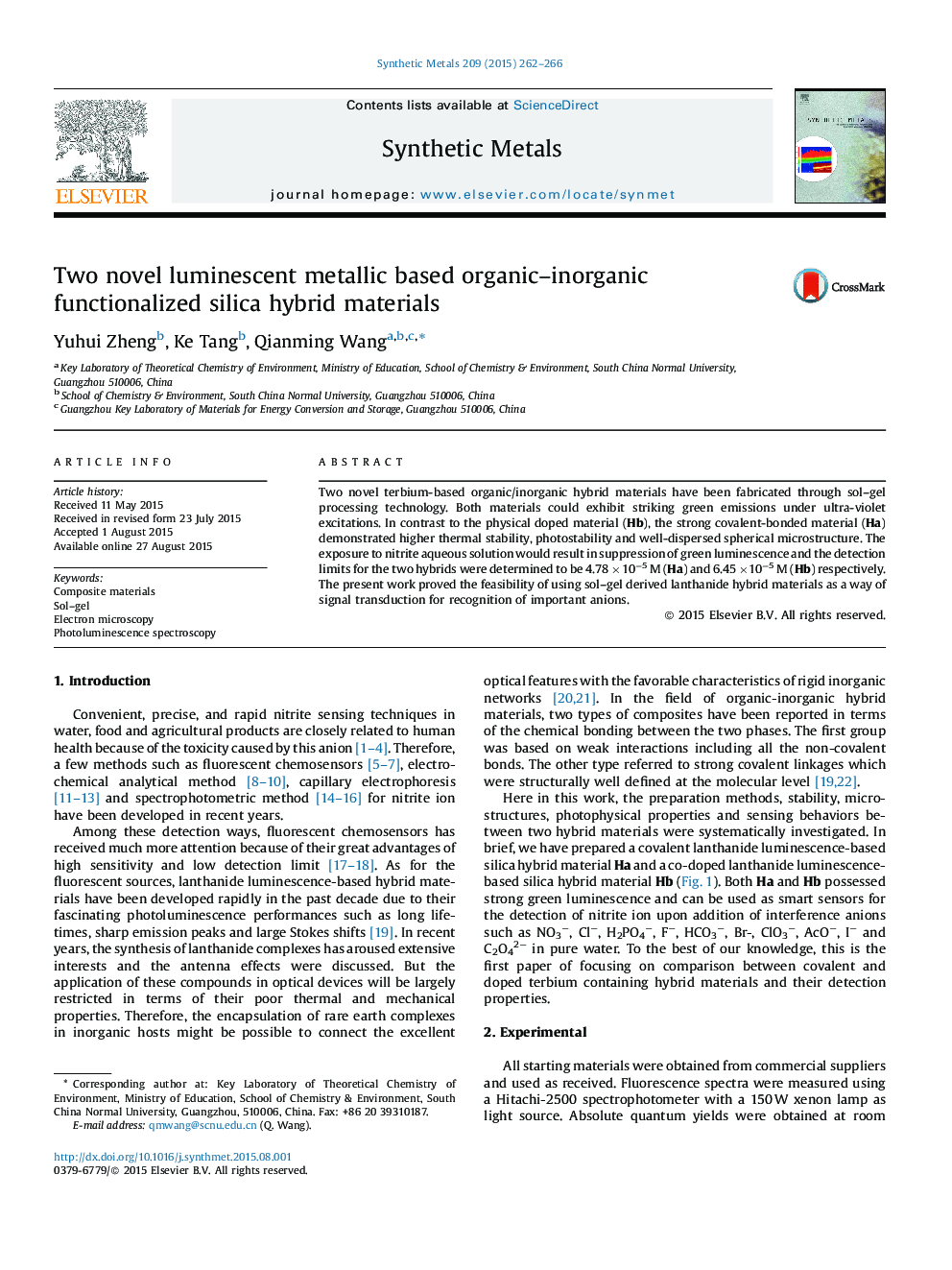| Article ID | Journal | Published Year | Pages | File Type |
|---|---|---|---|---|
| 1440502 | Synthetic Metals | 2015 | 5 Pages |
•Covalently and non-covalently bonded hybrid materials were designed.•Their microstructure, thermo and photoluminescent properties were compared.•The sensing behavior has been discussed.
Two novel terbium-based organic/inorganic hybrid materials have been fabricated through sol–gel processing technology. Both materials could exhibit striking green emissions under ultra-violet excitations. In contrast to the physical doped material (Hb), the strong covalent-bonded material (Ha) demonstrated higher thermal stability, photostability and well-dispersed spherical microstructure. The exposure to nitrite aqueous solution would result in suppression of green luminescence and the detection limits for the two hybrids were determined to be 4.78 × 10−5 M (Ha) and 6.45 × 10−5 M (Hb) respectively. The present work proved the feasibility of using sol–gel derived lanthanide hybrid materials as a way of signal transduction for recognition of important anions.
